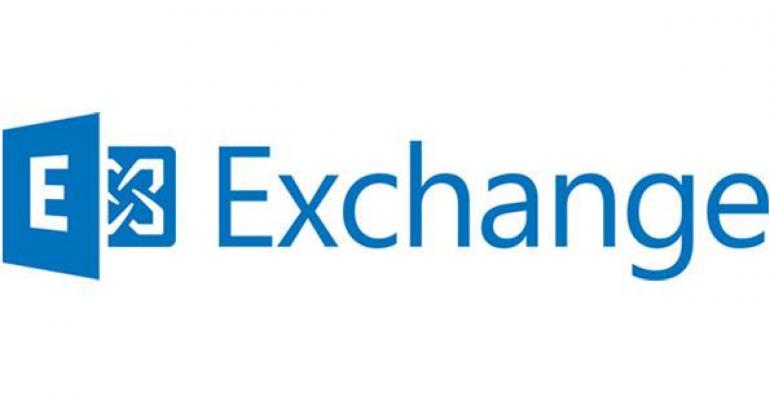Microsoft formally released Exchange 2013 (the Release to Manufacturing or RTM version) on December 3, 2012. For those who care about those things, the RTM build number was 516.032. Today, with Exchange 2013 CU7 looming, the build number is reputed to be in the 1040 range. The question is how has Exchange 2013 matured two years, seven (almost) cumulative updates (including one formal service pack), and a difference of five hundred-odd in builds.
Two years into the formal lifetime of a product is a good time to reflect on how well the software has done in customer hands. Below I assess eight of the most important areas of functionality in Exchange 2013 and provide links to articles describing each area. Please feel free to disagree with my assessment and award your own grade. I'll enjoy reading your comments!
| Feature | Comment | Grade |
| Server Architecture | Simplification is the key as server roles are reduced and protocols focused onto HTTP (the introduction of MAPI over HTTP is especially important). Overall, the new architecture appears solid, but co-existence has proved problematic at times as deployments struggle to cope with CAS placement and some bad bugs. Load balancing seems simpler in Exchange 2013 but it throws up some interesting questions too. A lot of the architecture work is being done to facilitate Office 365 by making it cheaper and easier for Microsoft to run server farms at massive scale. Some on-premises customers wonder whether they gain from this work, but overall they do. Given the number of servers running in Office 365, Microsoft might not care too much about Exchange 2013 performance characteristics, which are different (higher) than Exchange 2010. | B |
| High Availability | Continued progress in this space, including the introduction of the simplified DAG in Exchange 2013 SP1, the rewrite of the Information Store using "managed code," and the introduction of the Search Foundation as a replacement for the old MSSearch component. Still the most impressive part of Exchange | A |
| Data Loss Prevention (DLP) | DLP is now spreading from Exchange into SharePoint and some advances such as the introduction of document fingerprinting have been made. But overall the feeling is that Exchange-based DLP is still in its early days and customers who want a DLP solution often look elsewhere after considering what Exchange has to offer, if only because the need for DLP covers much more than email. | C |
| Managed Availability (MA) | The "big new thing" in Exchange 2013 has turned out into a "big black box" where most customers don't understand what MA does on their servers. The lack of a reasonable interface (neither the Windows event viewer nor PowerShell cuts it) makes MA less valuable than it really is, and when things go wrong no one knows what to do. The power of MA is exposed in Microsoft's 100,000-server deployment in Office 365, but few of us really need that capability. Given an approachable UI, MA would be better regarded and appreciated. We'll have to see what the future holds. | B |
| Site mailboxes | The bright new world of collaboration between Exchange and SharePoint has foundered on the twin rocks of complexity and customer understanding. This, together with Microsoft's decision to concentrate its Office 365 team collaboration story around "Groups" (not available to on-premises Exchange) means that site mailboxes are like a short-lived firework that's soon to fizzle out. | D |
| Exchange Administration Center (EAC) | The transition from the MMC-based Windows console (EMC) to the web-based EAC was always going to break some bits along the way, even if Microsoft started the ball rolling with ECP in Exchange 2010. People still complain about EAC, but it has matured nicely and Microsoft has added some of the missing bits back into the mix (like PowerShell command logging) as well as new functionality (like Alerts). The best bit about EAC is its ability to support multiple device types, a trick that EMC could only dream of. | A |
| Outlook Web App (OWA) | Somewhat surprisingly after the complete rewrite in Exchange 2010 SP1, Exchange 2013 introduced a new Metro-style OWA, subsequently revealed as being necessary to support OWA for Devices. Like its EAC counterpart, the new OWA lacked some features but it supported more device types. And like EAC, Microsoft has been adding more features back into OWA as updates roll out. Offline access has proved popular with many customers and performance has also improved. OWA is still missing some bits (like public folder calendar and tasks) but OWA is now Microsoft's strategic weapon for the delivery of new features through Office 365 (Clutter, People View, Groups, etc.) as Outlook struggles to keep up in the feature race. | A |
| Modern Public Folders (PF) | Flawed by the original redesign that couldn't scale up and needed to be redone and handicapped by truly awful migration facilities, you'd wonder why anyone would bother with the modern version of public folders. And then the truth hits home that many companies have vast quantities of old-style PFs that they need to get across to Exchange 2013 (or Exchange Online). They don't want to use SharePoint and have no appetite for migrating PFs elsewhere, so there's only one game in town. The good news is that MIcrosoft is working hard to improve scalability and performance. Now if they could only improve the quality of the migration experience... | D |
The Exchange product lifecycle kicks off again in late 2015 with the release of Exchange 2016. No one can say yet what the RTM version of Exchange 2016 will include. All will hope that it allows the on-premises version to catch up with its cloud counterpart and not become what Office for the Macintosh has become - a sad shadow of another version (in this case, Office for Windows).
Follow Tony @12Knocksinna





